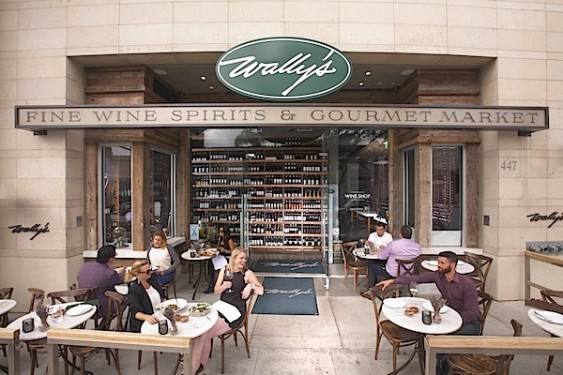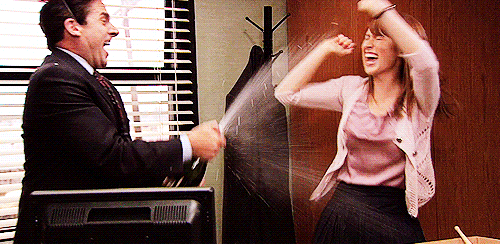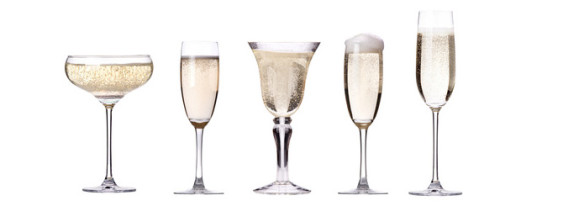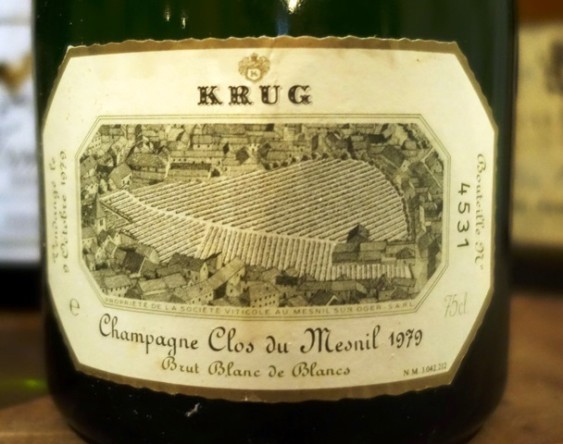New Year’s Eve is almost upon us, and by some estimates, over a quarter of the champagne purchased each year in the U.S. is bought in the week leading up to New Year’s. With that in mind, I wanted to get some champagne-buying and serving tips from a wine-retail professional. So I talked to Chloe Dickson, a sommelier at Wally’s Vinoteca in Beverly Hills.

I talked to Chloe Dickson, sommelier at Wally’s Vinoteca in Beverly Hills.
Here’s why she thinks champagne is so special, tips on how to serve it, and which labels you should look for this year.
Cluster Crush: What separates champagne from other sparkling wines?
Chloe Dickson: First and foremost, champagne must be from the region of Champagne. There are very strict rules and regulations on how champagne can be produced, two of them being location and terroir.
There are three grapes used to produce champagne – Chardonnay, Pinot Noir and Pinot Meunier. Champagne has a very cool climate and because of where it’s located on the globe, grapes are almost unable to ripen. What this contributes is high acidity and sharp, racy flavors. When you pair that with the process behind making champagne, what you are left with is one of the most unique sparkling wines in the world.

Read on below for Chloe’s top picks for what to drink on NYE this year.
Cluster Crush: Are there any helpful hints to keep in mind when serving champagne?
Chloe Dickson: Always make sure you serve it cold, between 42-46 degrees Fahrenheit for your average non-vintage champagne. Any specialties like Krug or Dom Pérignon should be served slightly warmer. When opening a bottle, always point the cork away from your face, and away from a crowd. Keep your hand on the cage and leave the cage on the cork, and gently twist the bottle, pushing down on the cork. As the cork gives, push down to prevent flying corks, or a champagne shower [Cluster Crush note: A champagne shower actually sounds kind of amazing!].

How could you not want a champagne shower? Image source Reaction Gifs.
Cluster Crush: What kind of glass is best to enjoy champagne and why?
Chloe Dickson: Contrary to popular belief, the best glass shape to serve champagne in is a tulip glass. It preserves the aromatics & bubbles. The second best is the champagne flute. The worst glass to serve champagne in is the coupe, which became popular in the 1920s, but you will lose the aromas and bubbles.

According to Chloe, the tulip-shaped glass in the center is the best for champagne. Photo source: Fotolia.
Cluster Crush: What will you be drinking this NYE and why?
Chloe Dickson: I hope to be drinking Krug Brut Grande Cuvée. It’s iconic and consistently one of my favorite champagnes to date.
Cluster Crush: If you could have any bottle of champagne in the world and money was no object, what would it be and why?

Here’s the bottle Chloe covets. Photo courtesy of Académie des Vins Anciens.
Chloe Dickson: A 1979 Krug Clos du Mesnil. It’s a very rare champagne from a single vineyard, and 1979 was the first vintage that Krug produced.
Cluster Crush: Sounds quite special! Do you have a few suggestions for champagnes people can enjoy themselves this new year’s?
Chloe Dickson: There are great choices at any price point. Here are a few I would suggest.
$50 or under: Lanson Brut Black Label or Veuve Clicquot N.V. are both extremely well-known brands. Lanson is a rich but dry style while Veuve is creamly and lively on the finish. You can’t lose with either one.
$50-$150: Billecart Salmon Brut Rosé is the perfect festive rosé. It’s got gorgeous flavors and is light and elegant. Bollinger Brut Special Cuvée N.V. is always rich with a dry aftertaste, bubbles like velvet and is food-friendly and impressive.
$150+: Krug Brut Grande Cuvée is a multi-vintage champagne dating back to iconic vintages over the last 25 years. It has very fine, elegant bubbles and is exceptionally fresh in the mouth. Dom Pérignon Plénitude P2 is part of Dom Pérignong’s reserve series thanks to additional aging. It is complex, rich and very vibrant.
Tweet me @clustercrush and let me know what you end up drinking this New Year’s Eve!

